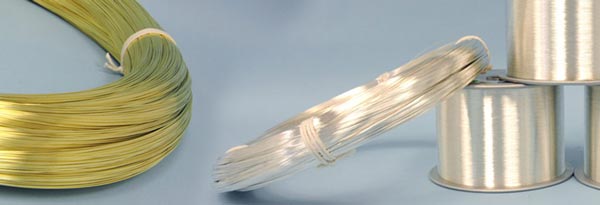There are many options engineers and manufacturers have when it comes to choosing base metals for design. Selecting materials is an essential part of the manufacturing process because each type boasts its own unique characteristics. Many individuals utilize the technique of metal plating to customize and maximize the properties of the conductor. Wire plating is relatively inexpensive while being a great way of combining the advantages of two metals.

Typically, manufactures uses copper or a copper-based alloy as a base metal. This is primarily due to copper’s high conductivity, reasonable cost, and stable mechanical performance. Although copper and beryllium copper wire offers users numerous benefits, many of the applications needed for electrical conductors are beyond the capacity of non-coated cables.
Plated beryllium copper wires have better solderability, contact resistance, corrosion resistance, temperature ranges, and chemical resistance. Because of the low cost and multiple advantages offered by plating, many electrical engineers utilize the manufacturing method.
Just as there is a variety choice for base metals, there are also options for plating materials. The three most common plating materials include:
Silver: This material is highly conductive and will reduce the resistance of a plated wire. Silver is an excellent material to use in high-frequency application because the skin effect increases the current flow through the material. Silver is also known to increase high-temperature performance while improving chemical resistance.
Tin: This material is the most commonly used when plating beryllium copper wire because it offers excellent solderability at low costs. It has improved chemical and corrosion resistance.
Nickel: This is the hardest metal of the three options. It offers users excellent resistance at high temperatures. Compared to the other two plating materials, nickel is the best at operating in harsh environments. Because it is hard, soldering is more difficult (requiring an activated flux).
Beryllium Copper
For more information on plating and plating material options, you should not hesitate to give our team a call.
Related Reading:

 Technical Data
Technical Data


